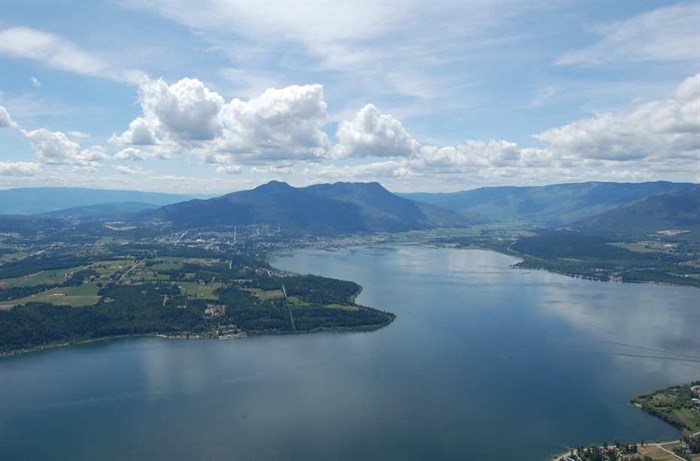
Shuswap Lake
Image Credit: www.salmonarm.ca
October 14, 2020 - 6:00 PM
An unprecedented algae bloom that appeared in Shuswap Lake near Salmon Arm this past spring has finally dissipated.
Erin Vieira, program manager with the Shuswap Watershed Council, said it was the largest algae bloom she has ever seen in the lake.
Vieira said although this bloom didn’t have a harmful effect on drinking water, the algae can release toxins that are harmful to people and pets.
“It was unprecedented in size and in duration,” she said.
The algae bloom was first observed in mid-June in Shuswap Lake near Salmon Arm, Tappen, Sunnybrae and Canoe before dissipating for a few weeks, and then returning in July and persisting into September.
READ MORE: Large algae bloom discovered in Shuswap Lake not harmful: Interior Health
The City of Salmon Arm visually monitored the bloom at Canoe on a daily basis, while Interior Health Authority and First Nations Health Authority tested water samples for the presence of microcystin toxin which can sometimes be associated with a blue-green algae bloom. The Columbia Shuswap Regional District and B.C. Ministry of Environment and Climate Change Strategy collected and analyzed water samples for various species of algae and density, according to the watershed council.
Monitoring of the algae wrapped up last week after results indicated the plant life had returned to normal.
The council believes the bloom is likely due to heavy rains in spring and early summer, high water levels in the Salmon River and smaller creeks, saturated soils adjacent to the river and a flush of nutrients from those soils, along with shallow calm water in Salmon Arm Bay.
Interior Health had urged beach-goers to be cautious around thick algal blooms.
Residents are reminded not to drink or cook using untreated water directly from lakes, ponds or rivers and boiling water will not remove blue-green algae toxins from the water. Beach-goers and swimmers should not go into a lake where a bloom is present. Pets should also be kept out water where there are blooms.
Additional information on blue-green algae can be found at HealthLink B.C.
To contact a reporter for this story, email Carli Berry or call 250-864-7494 or email the editor. You can also submit photos, videos or news tips to the newsroom and be entered to win a monthly prize draw.
We welcome your comments and opinions on our stories but play nice. We won't censor or delete comments unless they contain off-topic statements or links, unnecessary vulgarity, false facts, spam or obviously fake profiles. If you have any concerns about what you see in comments, email the editor in the link above.
News from © iNFOnews, 2020